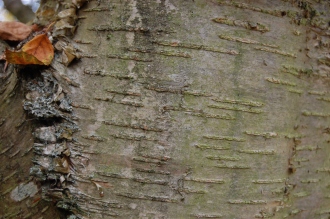Position: Full sun to partial shade
Flowering period: Late spring
Soil: Moist, well drained
Eventual Height: 20m
Eventual Spread: 8m
Hardiness: 3b, 4a, 4b, 5a, 5b, 6a, 6b, 7a, 7b
Family: Betulaceae
Betula alleghaniensis is a fast growing deciduous tree with an upright conical habit. Its mid green leaves are ovate with serrulate margins, up to 10cm long and 5.5cm broad. Its leaves turn yellow before they fall in autumn. Its trunk may achieve a diameter of up to 80cm. Its smooth bark is yellow/ bronze to grey with horizontal lenticels and flakes in horizontal strips. Its monoecious flowers are in the form of catkins, are wind pollinated, up to 6cm long and appear before its leaves. Its fruit is a cylindrical aggregate, these disintegrate upon maturity.
Betula alleghaniensis, commonly known as Gray Birch, Yellow Birch or Swamp Birch, is native to east North America. In its native habitat it grows on stream banks, moist soils and forested slopes.
The etymological root of the binomial name Betula is the old Latin name for the Birch tree. Alleghaniensis my be named after the Allegheny region of north east USA. Reader feedback would be welcome.
The landscape architect may find Betula alleghaniensis useful as a tree with open habit and attractive autumn leaf, and bark colour.
Ecologically, Betula alleghaniensis leaves provide a valuable source of food for moths and butterflies.
Betula alleghaniensis prefers moist, well-drained soils. It tolerates most pH of soil. It will tolerate wet soils.









Leave a comment